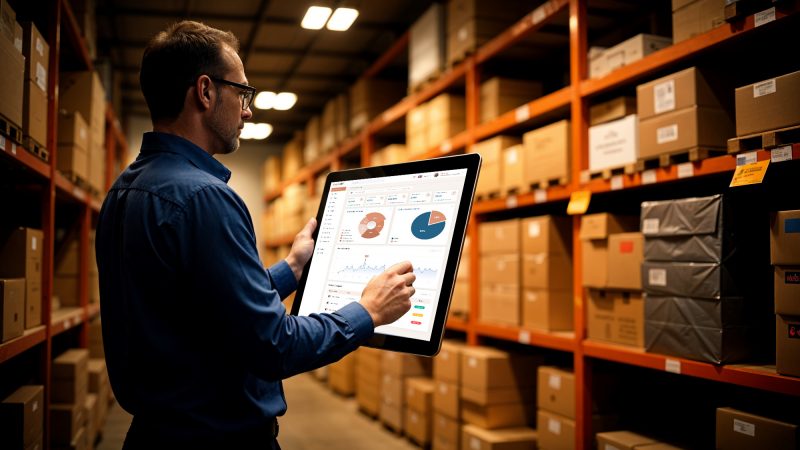How ERP software brings recovery to midsize organizations and benefits inventory management?

Disruption can propel midsize organizations to make significant changes to their business processes across sales, service, finance, marketing production planning, and workforce management. However, when the disruption changes into a complete global crisis, the business leaders are continually looking for ways to ensure that their businesses are active. They try to hold themselves together till there is a rebound.
It is essential to develop a way to make sure that the business is on the correct path towards its recovery. However, getting back to “business as usual” is not the solution at this point. The new trends that need agility, resilience, and instant insight are getting accelerated. It threatens the established organizational practices that got designed for automation, scalability, and cost savings.
The next trend of business innovation will not emerge from making the current processes quicker. Instead, the main focus will be on the organization’s capacity to act without delay. It is essential to respond to any unforeseen changes and cope with changes, for instance, the abrupt shifts in the regulations, supply shortages, unavailability of resources, and the increase in demand for products that didn’t get considered as mission-critical till sometime back.
The task might seem highly challenging, but the most successful midsize organizations plan for the next growth wave. It means understanding the requirements of every business function and getting prepared for risks that might appear. It is also essential to act on every scope as and when it comes.
ERP software assists to create the foundation for a next normal
When you manage the day-to-day business operations, rarely do people pause and refresh the way data gets shared and managed. Such moments call for the functional leaders to rethink how they can respond to change and grow their workforce and operations. It is necessary to weave intelligence in the strategies.
One of the standard approaches is to replace the vast reports and spreadsheets with a seamless business application that is correct for existing needs, which is a state of disruption. As an organization move through its recovery, the investment is likely to get restricted in its capacity to assist expansion and data sharing through the value chain.
This strategy doesn’t work as the business doesn’t have the freedom to do what it does best – scale the operations up and down with market fluctuations and move its focus to respond to the consumer demand. Keeping this in mind, cloud-based ERP software is the best solution for midsize organizations. To know more about this, you can check out best ERP in KSA.
However, you need to know that ERP isn’t just a technology! It is a tool that assists businesses to get the right things done the correct way. It is the central point that connects all the factors of the value chain. It acts as a source of visibility and proactive insights that the decision-makers require to move today, plan for the future and succeed in the days to come.
Responds to data quicker irrespective of the circumstances
Executing an ERP solution in the cloud provides ongoing transparency that midsize organizations should know about their performance. They need to know all that is happening in the background and the factors that act as risks or opportunities. They also need to know where there is a need for an inventory for 24 x 7. Also, they benefit from the analytics capacities that enable them to learn from the past and observe the existing business landscape and look towards the next move.
You need to think about the scopes of what can happen to a supply chain right after a natural disaster. It is also essential to know what will happen when the stocks go empty and what to do when the economic surge signs emerge. In such times, such insight can are powerful to survive through another disruption, accelerating growth, or moving into new markets.

How ERP benefits inventory management?
Conventionally, the inventory management process is people dependant. The crucial details like work in progress, stock in hand, and various other inventory management details are generally documented in the paper, stored in bulky folders, and kept in the file cabinets for years. These practices gave rise to human mistakes and made it complex to have transparency in the inventory management processes. To date, several organizations resort to such practices.
If you want to augment inventory management, you need to deploy ERP software. It will help you to get a centralized insight into the inventory. Here are three essential advantages of incorporating ERP software with the inventory management process.
-
Inventory optimization
Under and overproduction can get detrimental to an organization. If you want to keep the expenses under control, it is necessary to have the correct mix and inventory amount in your hand. If a product is perishable, the inventory management should work on a specific schedule. The ERP software enables you to plan your replenishment requirements and production. It ensures that the inventory quantity at any point in time is correct so that there are no mistakes in the buying decision.
-
Supply chain transparency
Today, many organizations like online retailers use third-party supply chain partners to refill their inventory levels and co-ordinate consumer shipments. To get this done correctly, the inventory management needs to get incorporated with an ERP solution that tracks the firm’s inventory cycles and production and co-ordinates with third-party logistics systems and suppliers. For example, when the supplier is aware of your organization’s fluctuating inventory levels, it can ensure that the product is available at the warehouse when the consumers require it.
-
Correct financial reporting
The inventory at every stage is an integral part of the financial report. Whether it is work in progress, finished goods, or raw materials, all kinds of inventory have a financial value that needs to get accounted for. The ERP software makes sure that your tax returns and annual reports are precise.
These are some of how ERP software helps in resolving disruption in midsize companies and benefits inventory management.






